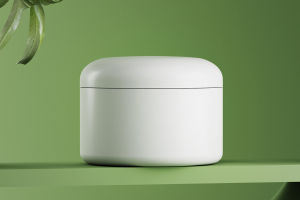Baking is a delicate culinary art that requires the use of a variety of ingredients and materials to make a variety of delicious pastries.
Here’s a discussion of some common baking ingredients and their role in different recipes:
1. Flour:
- Flour is the base of most baking recipes, providing structure and texture.
- Different types of flour include plain flour, dough flour, cake flour, and bread flour, which are suitable for different types of pasta and pastries.
- The protein content in flour affects the toughness and elasticity of the pastry.
2. Sugar:
- Sugar provides sweetness to baked goods while also adding moistness and texture to pastries.
- Different types of sugar such as white sugar, brown sugar, powdered sugar, and honey can be used in different recipes to achieve different tastes and textures.
3. Yeast:
- Yeast is an important ingredient used in making bread and dough, it ferments the dough and creates carbon dioxide bubbles that make the bread rise.
- There are two common types of active dry yeast and fresh yeast, and they are used in different ways in recipes.
4. Butter:
- Butter adds a rich, creamy flavor to baked products while also imparting texture and mouthfeel.
- Butter can be used to make cookies, pies, chocolate chip cookies, and other foods.
5. Chocolate:
- Chocolate can be used in baking to make a variety of chocolate cakes, cookies, and brownies.
- Different types of chocolate, such as bitter, semi-sweet, and white, provide different flavors and colors.
6. Jam:
- Jam is often used to fill pastries such as jam bread, jam biscuits, and jam pies.
- They add the natural sweetness and aroma of fruit to pastries.
7. Dairy products:
- Dairy products such as milk, yogurt, and buttermilk are often used in baking to add moistness and creaminess to pasta.
- Dairy products can also be used to make meringues, cheesecakes, etc.
8. Spices and seasonings:
- Spices such as cinnamon, vanilla extract, lemon zest, etc. can add aroma and taste to food.
- Salt is often used to balance sweetness and enhance the flavor of other spices.
9. Baking powder and baking soda:
- Baking powder and baking soda are chemical leavening agents used to make pastry rise and become fluffy.
- They are often used with acidic ingredients, such as yogurt or vinegar, to create carbon dioxide bubbles.
Different ingredients play different roles in different baking recipes, and by mixing and matching these ingredients, you can create delicious pastries in a variety of flavors and textures.
Here are some baking tips and tricks to help ensure the quality and taste of your food:
1. Mixing the dough:
- When mixing the dough, make sure to mix all the ingredients evenly, but don't over-mix to avoid stimulating too much dough protein and making the product too chewy.
- For most pastries, use a mixer on low speed or a hand mixer. Do not use a mixer on high speed to avoid over-developing the gluten.
2. Fermentation of dough:
- Fermentation is a key step in making bread and pastries, as it allows the dough to rise and become fluffy.
- Place the dough in a warm place to encourage yeast activity. Don't overheat the dough to avoid killing the yeast.
- Give the dough enough time to ferment until it rises significantly, usually 1-2 hours.
3. Temperature control:
- Temperature is very important in baking. Use an accurate thermometer to ensure your oven and dough are at accurate temperatures.
- Most doughs need to rise at room temperature, but some need to be chilled in the refrigerator. Follow the temperature guidelines in the recipe.
4. Baking time:
- Baking time is key as it can affect the texture of the food. Use a timer and keep an eye on the cooking time of your food.
- If there are no specific timing instructions in your baking recipe, you can use the toothpick test: Insert a toothpick into the center of the food. If the toothpick comes out clean, the food is done.
5. Cooling and storage:
- Pastry needs a period of cooling after baking to stabilize its structure. Do not rush to cut or eat hot pasta.
- When storing baked products, use airtight containers or wrappers to maintain moisture and freshness. Some pastries may need to be kept in the refrigerator, while some can be kept at room temperature.


